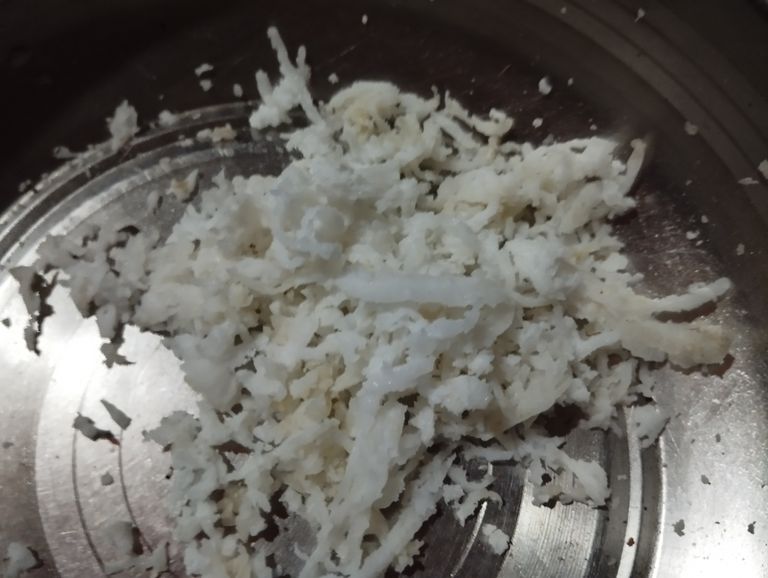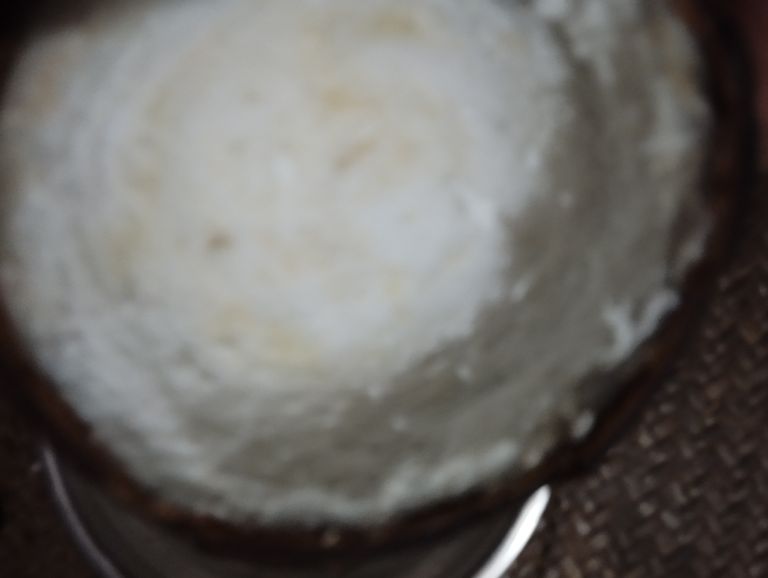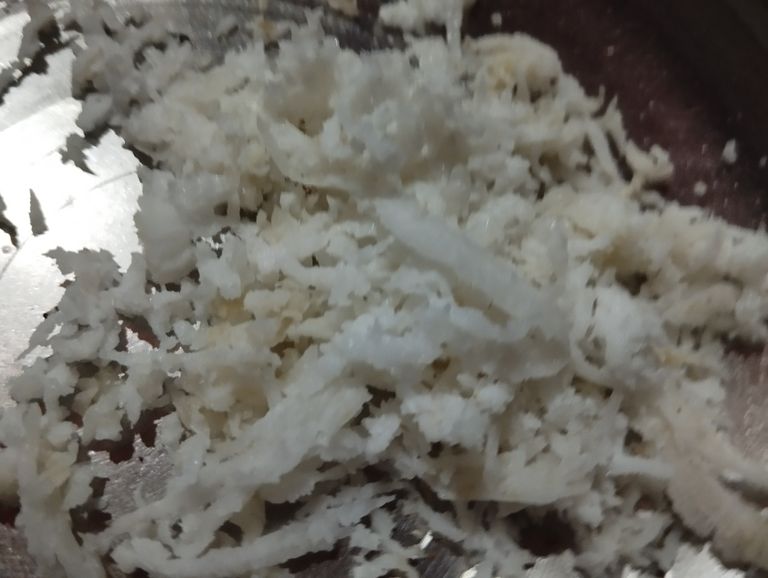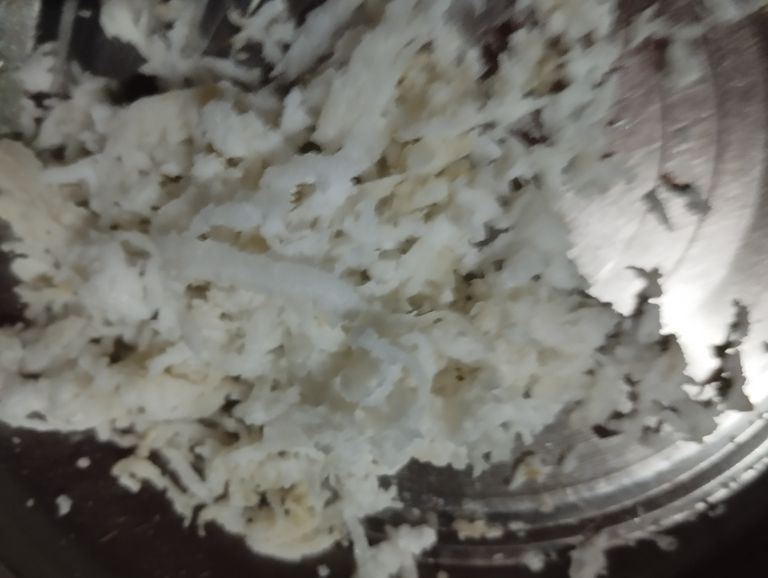
Health Benefits of Eating Coconut.
Coconut is a tropical fruit known for its refreshing water, creamy flesh, and versatile oil. It has been a staple food in many cultures for centuries, offering a wide range of health benefits. From boosting immunity to improving digestion, coconut is packed with essential nutrients that support overall well-being. In this blog, we will explore the numerous benefits of eating coconut and why you should include it in your diet.
- Rich in Nutrients
Coconut is a powerhouse of essential nutrients. It contains vitamins, minerals, and healthy fats that nourish the body. Some key nutrients found in coconut include:
Vitamins: C, E, B1, B3, B5, and B6
Minerals: Iron, calcium, magnesium, phosphorus, selenium, and potassium
Healthy Fats: Medium-chain triglycerides (MCTs), which provide quick energy and support metabolism
- Boosts Energy Levels
Coconut is an excellent source of natural energy. The MCTs present in coconut are quickly absorbed by the liver and converted into energy. This makes coconut a great snack for athletes, fitness enthusiasts, or anyone looking for a quick energy boost.
- Supports Weight Loss
Contrary to popular belief, the fats in coconut can actually help with weight loss. The MCTs in coconut increase metabolism and promote fat burning. They also help reduce appetite, making you feel fuller for longer. This can prevent overeating and support weight management.
- Improves Digestion and Gut Health
Coconut contains dietary fiber, which aids digestion and prevents constipation. The antimicrobial properties of coconut also help fight harmful bacteria and support a healthy gut microbiome. Coconut oil, in particular, can help soothe digestive issues such as irritable bowel syndrome (IBS) and acid reflux.
- Strengthens the Immune System
Coconut has strong antibacterial, antiviral, and antifungal properties due to the presence of lauric acid. Lauric acid is known to boost the immune system and help the body fight infections, colds, flu, and other illnesses. Regular consumption of coconut can help strengthen immunity and keep you healthy.
- Promotes Heart Health
Despite its high fat content, coconut is beneficial for heart health. The healthy fats in coconut can increase good cholesterol (HDL) and reduce bad cholesterol (LDL). This helps maintain a healthy heart and reduces the risk of cardiovascular diseases.
- Regulates Blood Sugar Levels
Coconut has a low glycemic index and helps regulate blood sugar levels. The fiber in coconut slows down the absorption of sugar, preventing blood sugar spikes. This makes it a good food choice for people with diabetes or those looking to maintain stable energy levels.
- Enhances Brain Function
Coconut is beneficial for brain health. The MCTs in coconut are converted into ketones, which provide an alternative energy source for the brain. This is especially helpful for people with Alzheimer’s disease, as ketones can improve cognitive function and memory.
- Improves Skin and Hair Health
Coconut is a natural beauty booster. Coconut oil is widely used for skin and hair care due to its moisturizing and healing properties. Benefits include:
Skin: Prevents dryness, reduces wrinkles, and soothes skin conditions like eczema and psoriasis
Hair: Strengthens hair, prevents dandruff, and promotes hair growth
- Supports Bone and Dental Health
Coconut contains calcium and phosphorus, which are essential for strong bones and teeth. The antimicrobial properties of coconut also help prevent gum infections and tooth decay. Regular consumption of coconut can contribute to better oral and bone health.
- Reduces Stress and Improves Mood
Coconut contains healthy fats that help reduce stress and anxiety. The scent of coconut has also been found to have a calming effect on the nervous system. Consuming coconut or using coconut oil for massage can help promote relaxation and improve mood.
- A Natural Detoxifier
Coconut water is a natural detoxifier that helps flush out toxins from the body. It hydrates the body, balances electrolytes, and improves kidney function. Drinking coconut water regularly can help prevent kidney stones and promote overall detoxification.
How to Include Coconut in Your Diet
There are many ways to enjoy the health benefits of coconut:
Fresh Coconut Flesh: Eat raw coconut as a snack or add it to smoothies.
Coconut Water: Drink fresh coconut water to stay hydrated and boost immunity.
Coconut Oil: Use it for cooking, baking, or as a natural moisturizer.
Coconut Milk: Add to curries, soups, and smoothies for a creamy texture.
Coconut Flour: Use as a gluten-free alternative in baking.
Conclusion
Coconut is a superfood that offers numerous health benefits, from improving digestion and boosting immunity to promoting heart health and enhancing brain function. Whether you consume it in the form of coconut water, oil, milk, or fresh flesh, adding coconut to your diet can significantly improve your overall well-being. So, start incorporating coconut into your daily routine and enjoy its amazing health benefits.

How to Plant Coconut Saplings: A Complete Guide
Coconuts are one of the most valuable tropical crops, providing food, oil, and raw materials for various industries. If you are interested in growing coconut trees, planting healthy saplings is the first crucial step. In this blog, we will guide you through the process of selecting, planting, and caring for coconut saplings to ensure strong growth and a high yield.
- Choosing the Right Coconut Sapling
Before planting, selecting the right sapling is essential. Here’s what you need to consider:
a. Selecting the Right Variety
There are two main types of coconut trees:
Tall varieties – These live longer and produce more coconuts over time but take longer to start yielding.
Dwarf varieties – These start yielding sooner but have a shorter lifespan.
Choose the variety based on your climate, soil conditions, and the purpose of cultivation.
b. Checking Sapling Health
The sapling should be 8-12 months old with a strong root system.
Leaves should be green, healthy, and free from disease.
The base of the sapling should be free from cracks and damage.
- Preparing the Planting Site
Coconut trees thrive in tropical and coastal regions with well-drained soil and ample sunlight. Follow these steps to prepare the site:
a. Choosing the Right Location
The area should receive full sunlight (at least 6-8 hours per day).
Soil should be well-draining, sandy, or loamy, with a pH of 5.5 to 7.5.
Avoid waterlogged or clayey soils, which can cause root rot.
b. Digging the Planting Hole
Dig a hole of 3x3 feet (1x1 meter) to ensure space for roots to grow.
Mix topsoil with organic compost or cow dung to improve fertility.
Let the pit sit open for 2-4 weeks before planting to remove harmful pests.
- Planting the Coconut Sapling
Once the pit is ready, follow these steps to plant your coconut sapling:
a. Setting the Sapling in the Hole
Place the sapling in the center of the hole.
Ensure the collar (the point where the roots meet the stem) is at ground level.
Fill the hole with a mix of soil, compost, and sand to support healthy growth.
b. Watering After Planting
Water immediately after planting to settle the soil.
Keep the soil moist but not waterlogged in the first few months.
c. Providing Mulch
Add a layer of dried leaves or coconut husks around the base to retain moisture and prevent weeds.
- Caring for Coconut Saplings
Caring for your coconut sapling ensures strong growth and high yield.
a. Watering Schedule
Water the sapling twice a week in dry seasons.
Reduce watering in rainy seasons to avoid root rot.
b. Fertilization
Apply organic manure every 3-4 months.
Use NPK fertilizer (12:12:36) every 4-6 months for better growth.
Apply fertilizers 1-2 feet away from the base to avoid root damage.
c. Protecting from Pests and Diseases
Red palm weevil & rhinoceros beetle can damage young saplings. Use neem oil or pesticides if necessary.
Leaf blight and bud rot can be prevented by ensuring proper drainage and applying fungicides.
- Supporting Growth in the First Year
Avoid planting near large trees that block sunlight.
Protect from strong winds using a temporary fence or shade net.
Keep the base weed-free to prevent competition for nutrients.
- When to Expect Coconut Yield
Tall varieties start producing in 6-8 years, while dwarf varieties yield in 3-5 years.
Each tree produces 50-100 coconuts per year depending on variety and care.
Final Thoughts
Growing coconut trees requires patience and care, but the rewards are worth it. By selecting healthy saplings, preparing the soil properly, and providing the right care, you can enjoy a thriving coconut plantation for decades.
Are you planning to grow coconuts? Share your experiences in the comments.


How to Make Traditional Coconut Naru (Sweet Coconut Balls)
Coconut Naru is a popular Bengali sweet made with ripe coconut, sugar or jaggery, and a touch of cardamom. These delicious coconut balls are easy to make and perfect for festive occasions like Durga Puja, Lakshmi Puja, or simply as a homemade treat. In this blog, we will explore a step-by-step guide to making Paka Narikel er Naru (Sweet Coconut Balls with Ripe Coconut).
Ingredients for Coconut Naru
To make approximately 20-25 coconut naru, you will need:
1 large ripe coconut (grated)
1.5 cups of sugar or 1 cup jaggery (adjust as per taste)
2-3 green cardamoms (powdered)
½ cup milk (optional, for a softer texture)
1 tablespoon ghee (for extra flavor)
Step-by-Step Instructions
Step 1: Grating the Coconut
Break open the ripe coconut and remove the white flesh.
Use a grater or a food processor to finely grate the coconut. The finer the texture, the smoother your naru will be.
Step 2: Cooking the Coconut Mixture
Heat a heavy-bottomed pan or kadhai on low heat.
Add the grated coconut and stir continuously for 2-3 minutes to remove excess moisture.
Now, add sugar or jaggery to the pan and mix well.
Continue stirring the mixture on low-medium heat until the sugar or jaggery completely melts and combines with the coconut.
If using milk, add it at this stage to soften the texture of the naru.
Step 3: Adding Flavor and Texture
Crush the cardamoms and add them to the mixture for a fragrant aroma.
Add a tablespoon of ghee to enhance the richness and prevent sticking.
Keep stirring continuously until the mixture thickens and starts leaving the sides of the pan.
Step 4: Shaping the Naru
Once the mixture thickens and forms a lump, remove it from the heat.
Allow it to cool slightly but not completely (it should still be warm).
Grease your hands with a little ghee and start shaping small round balls.
Place them on a plate and let them cool completely to set.
Tips for Perfect Coconut Naru
✔ Use fresh coconut for the best taste and texture.
✔ Stir continuously to prevent burning.
✔ Jaggery vs. Sugar – If using jaggery, dissolve it first in a little water and strain to remove impurities.
✔ Soft or Firm Texture – For softer naru, add a little milk; for firmer ones, skip the milk.
✔ Storage – Store the naru in an airtight container for up to a week.
Serving Suggestions
Coconut Naru is best enjoyed with a cup of tea or as a festive offering. You can also serve them as a quick energy-boosting snack.
Variations
Dry Fruits Naru – Add chopped nuts like almonds, cashews, or raisins.
Chocolate Coconut Naru – Mix in cocoa powder for a unique twist.
Coconut Khoya Naru – Add some khoya (reduced milk) for a richer flavor.
Conclusion
Making coconut naru at home is simple and brings back nostalgic flavors of Bengali festivities. Whether for special occasions or just to satisfy your sweet cravings, this traditional dessert is always a great choice. Try this recipe and let us know how it turned out. Would you like more Bengali dessert recipes? Share your thoughts in the comments below.

How to Make Traditional Coconut Naru (Sweet Coconut Balls)
Coconut Naru is a popular Bengali sweet made with ripe coconut, sugar or jaggery, and a touch of cardamom. These delicious coconut balls are easy to make and perfect for festive occasions like Durga Puja, Lakshmi Puja, or simply as a homemade treat. In this blog, we will explore a step-by-step guide to making Paka Narikel er Naru (Sweet Coconut Balls with Ripe Coconut).
Ingredients for Coconut Naru
To make approximately 20-25 coconut naru, you will need:
1 large ripe coconut (grated)
1.5 cups of sugar or 1 cup jaggery (adjust as per taste)
2-3 green cardamoms (powdered)
½ cup milk (optional, for a softer texture)
1 tablespoon ghee (for extra flavor)
Step-by-Step Instructions
Step 1: Grating the Coconut
Break open the ripe coconut and remove the white flesh.
Use a grater or a food processor to finely grate the coconut. The finer the texture, the smoother your naru will be.
Step 2: Cooking the Coconut Mixture
Heat a heavy-bottomed pan or kadhai on low heat.
Add the grated coconut and stir continuously for 2-3 minutes to remove excess moisture.
Now, add sugar or jaggery to the pan and mix well.
Continue stirring the mixture on low-medium heat until the sugar or jaggery completely melts and combines with the coconut.
If using milk, add it at this stage to soften the texture of the naru.
Step 3: Adding Flavor and Texture
Crush the cardamoms and add them to the mixture for a fragrant aroma.
Add a tablespoon of ghee to enhance the richness and prevent sticking.
Keep stirring continuously until the mixture thickens and starts leaving the sides of the pan.
Step 4: Shaping the Naru
Once the mixture thickens and forms a lump, remove it from the heat.
Allow it to cool slightly but not completely (it should still be warm).
Grease your hands with a little ghee and start shaping small round balls.
Place them on a plate and let them cool completely to set.
Tips for Perfect Coconut Naru
✔ Use fresh coconut for the best taste and texture.
✔ Stir continuously to prevent burning.
✔ Jaggery vs. Sugar – If using jaggery, dissolve it first in a little water and strain to remove impurities.
✔ Soft or Firm Texture – For softer naru, add a little milk; for firmer ones, skip the milk.
✔ Storage – Store the naru in an airtight container for up to a week.
Serving Suggestions
Coconut Naru is best enjoyed with a cup of tea or as a festive offering. You can also serve them as a quick energy-boosting snack.
Variations
Dry Fruits Naru – Add chopped nuts like almonds, cashews, or raisins.
Chocolate Coconut Naru – Mix in cocoa powder for a unique twist.
Coconut Khoya Naru – Add some khoya (reduced milk) for a richer flavor.
Conclusion
Making coconut naru at home is simple and brings back nostalgic flavors of Bengali festivities. Whether for special occasions or just to satisfy your sweet cravings, this traditional dessert is always a great choice. Try this recipe and let us know how it turned out. Would you like more Bengali dessert recipes? Share your thoughts in the comments below.
How to Make Traditional Coconut Naru (Sweet Coconut Balls)
Coconut Naru is a popular Bengali sweet made with ripe coconut, sugar or jaggery, and a touch of cardamom. These delicious coconut balls are easy to make and perfect for festive occasions like Durga Puja, Lakshmi Puja, or simply as a homemade treat. In this blog, we will explore a step-by-step guide to making Paka Narikel er Naru (Sweet Coconut Balls with Ripe Coconut).
Ingredients for Coconut Naru
To make approximately 20-25 coconut naru, you will need:
1 large ripe coconut (grated)
1.5 cups of sugar or 1 cup jaggery (adjust as per taste)
2-3 green cardamoms (powdered)
½ cup milk (optional, for a softer texture)
1 tablespoon ghee (for extra flavor)
Step-by-Step Instructions
Step 1: Grating the Coconut
Break open the ripe coconut and remove the white flesh.
Use a grater or a food processor to finely grate the coconut. The finer the texture, the smoother your naru will be.
Step 2: Cooking the Coconut Mixture
Heat a heavy-bottomed pan or kadhai on low heat.
Add the grated coconut and stir continuously for 2-3 minutes to remove excess moisture.
Now, add sugar or jaggery to the pan and mix well.
Continue stirring the mixture on low-medium heat until the sugar or jaggery completely melts and combines with the coconut.
If using milk, add it at this stage to soften the texture of the naru.
Step 3: Adding Flavor and Texture
Crush the cardamoms and add them to the mixture for a fragrant aroma.
Add a tablespoon of ghee to enhance the richness and prevent sticking.
Keep stirring continuously until the mixture thickens and starts leaving the sides of the pan.
Step 4: Shaping the Naru
Once the mixture thickens and forms a lump, remove it from the heat.
Allow it to cool slightly but not completely (it should still be warm).
Grease your hands with a little ghee and start shaping small round balls.
Place them on a plate and let them cool completely to set.
Tips for Perfect Coconut Naru
✔ Use fresh coconut for the best taste and texture.
✔ Stir continuously to prevent burning.
✔ Jaggery vs. Sugar – If using jaggery, dissolve it first in a little water and strain to remove impurities.
✔ Soft or Firm Texture – For softer naru, add a little milk; for firmer ones, skip the milk.
✔ Storage – Store the naru in an airtight container for up to a week.
Serving Suggestions
Coconut Naru is best enjoyed with a cup of tea or as a festive offering. You can also serve them as a quick energy-boosting snack.
Variations
Dry Fruits Naru – Add chopped nuts like almonds, cashews, or raisins.
Chocolate Coconut Naru – Mix in cocoa powder for a unique twist.
Coconut Khoya Naru – Add some khoya (reduced milk) for a richer flavor.
Conclusion
Making coconut naru at home is simple and brings back nostalgic flavors of Bengali festivities. Whether for special occasions or just to satisfy your sweet cravings, this traditional dessert is always a great choice. Try this recipe and let us know how it turned out.
Telegram and Whatsapp